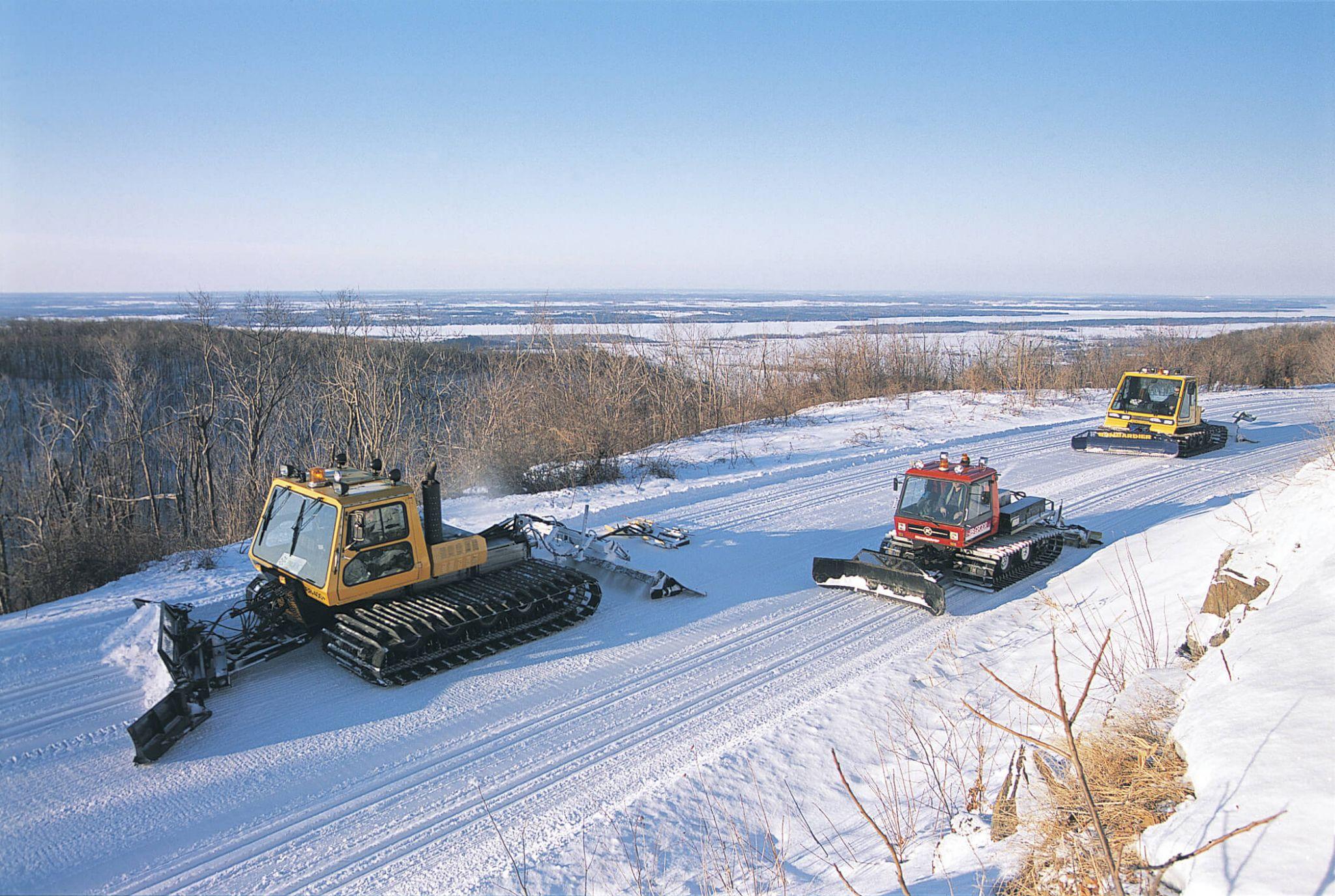
Each winter, skiers flock to Gatineau Park, eager to glide across its internationally renowned network of trails. On good days, these trails offer a near-magical experience: crisp corduroy tracks, smooth grooves and an ever-changing backdrop of snow-covered forest.
Behind this 200-km trail network lies effort, expertise and dedication. For the Park’s maintenance team, making these world-class trails ski-ready is an art form, honed through decades of experience.
In this blog
The making of Gatineau Park’s ski network
Step 1: Building the base
Every ski season starts the same way: with anticipation and a whole lot of groundwork. As soon as the first snow falls, we swing into action.
The first order of business is to create a good base by compacting snow, filling holes, levelling ditches and covering rocks.
Every snowfall is an opportunity and a resource our team works hard to preserve. This preparatory work can take weeks to complete.
Reminder: Walking on ski trails, including the corduroy between the tracks, destroys the hard work of our teams. As early as the first snowfall, please use only the trails designated for your specific activity.

Step 2: Transforming snow into ski trails
Once the team has a good base to work with, the real magic begins.
We typically groom the parkways first, as they have fewer natural obstacles and accumulate snow more quickly. Wider, central trails like 1 and 50 follow soon after.
Operations include:
- widening the trails
- setting track across the full width of the trails
- placing snow along the trails to use when conditions deteriorate
The season officially kicks off when maintenance teams are able to ensure regular maintenance of the cross-country ski network. From that point on, a daily or season pass is required to access the cross-country ski trail network in Gatineau Park.
Step 3: Rinse and repeat, over 200 km of trails

Maintaining the full network is labour-intensive. It takes about 60 combined hours of work each time the trails are groomed, which happens at least three or four times a week.
Groomers work through the night and early morning. On a good day, grooming takes six to eight hours per person. On a bad day — when snow conditions are tricky or temperatures too cold — it can take up to 14 hours.
When it all comes together, the results are spectacular. By mid-season, trails are usually at their best — a testament to the care that went into them.
Working with nature
Grooming is an art, where decades of experience meet the ever-changing whims of Mother Nature. It’s about understanding the snow and temperatures and knowing when and how to adapt.
- Snow: Fresh snow is light and malleable — perfect for grooming. Wet snow and dry powder are challenging — the former is heavy, and the latter has the frustrating habit of blowing away. But the ultimate challenge? No snow at all.
- Temperature: Ideal temperatures hover between -1°C and -15°C. Extreme cold — especially early in the season when the base is thin — can turn trails to ice, making grooming very difficult.
Climate change is also leading to more variable temperatures in the Park. The freeze-thaw cycles accelerate the aging of snow crystals, making snow more compact and prone to transforming into ice.
Despite these challenges, our team finds ways to adapt and keep the trails skiable.
Come spring, the longer days and more intense sunlight melt the snow’s surface. Water infiltrates the base, creating icy patches. Wind and rising temperatures accelerate the thaw, signaling the inevitable end of another ski season.
As you’re gliding along perfectly groomed trails this winter, take a moment to appreciate the work — and the people — that made it possible. And if you see our maintenance team out there, take a moment to say hello — they’ll appreciate it!